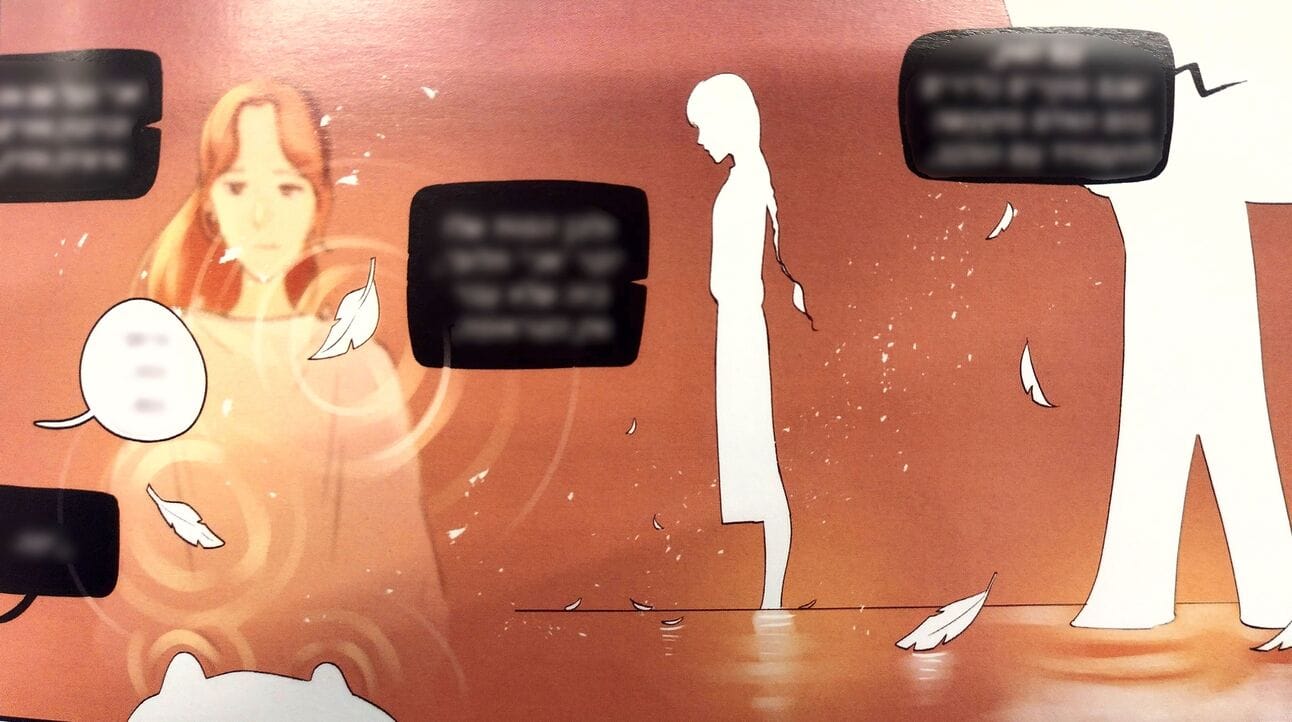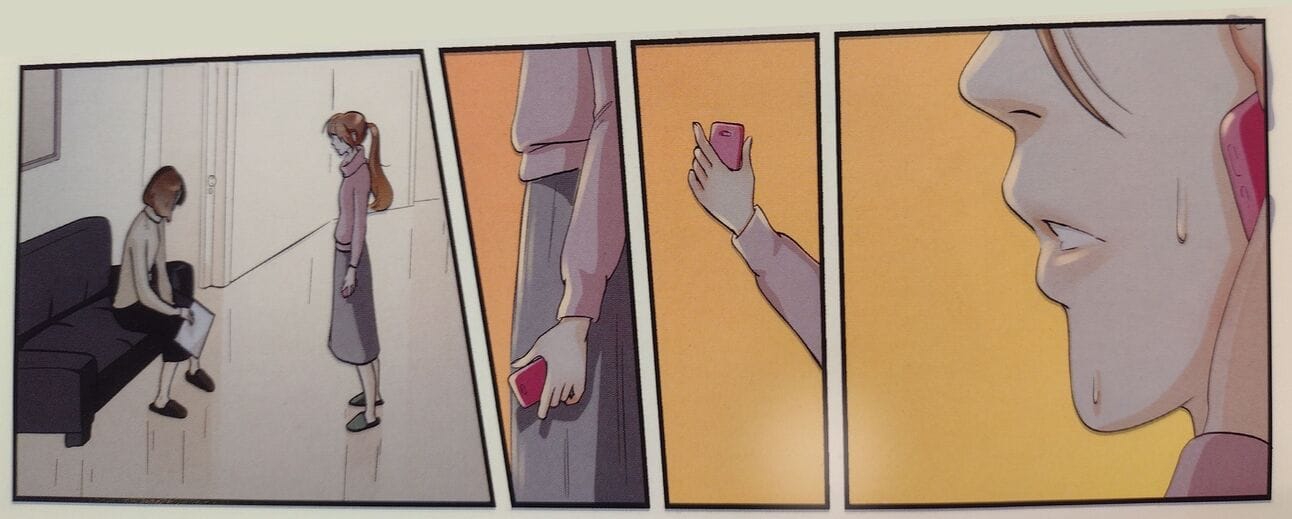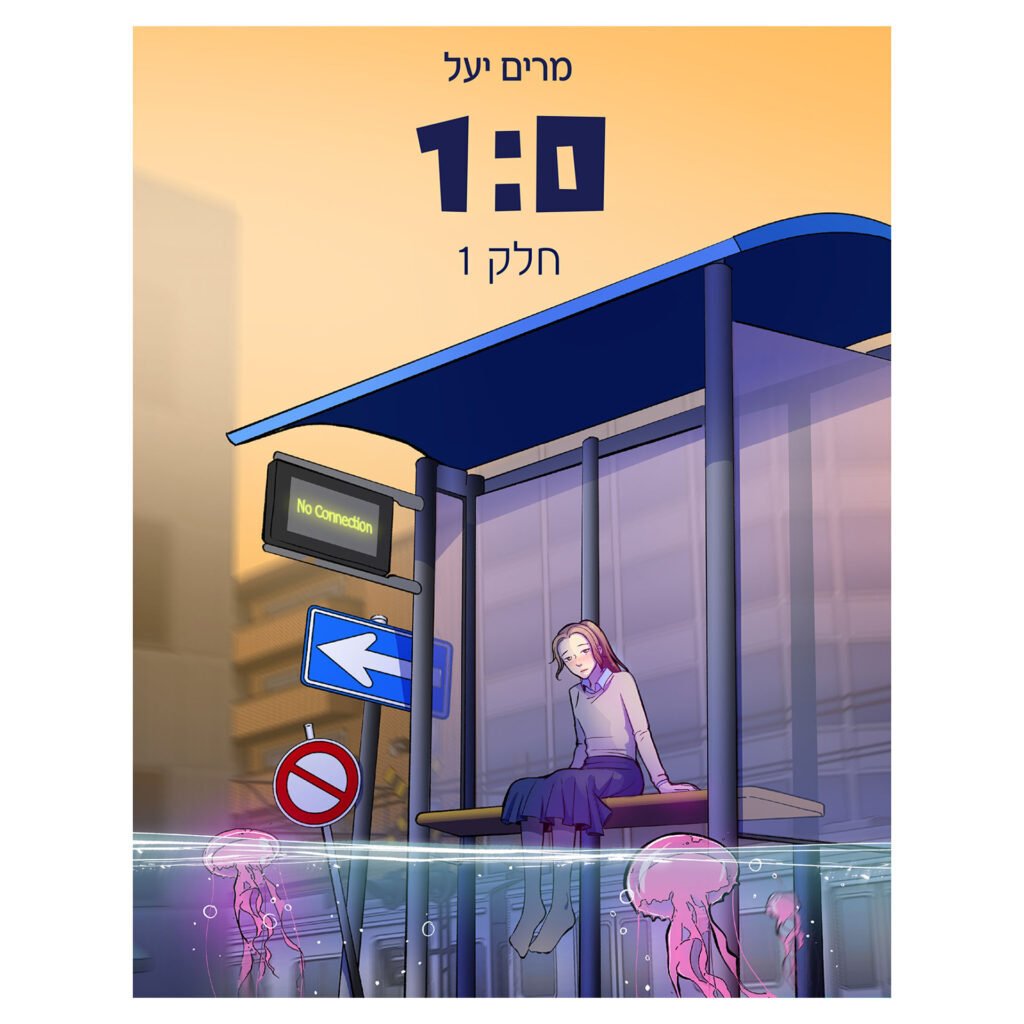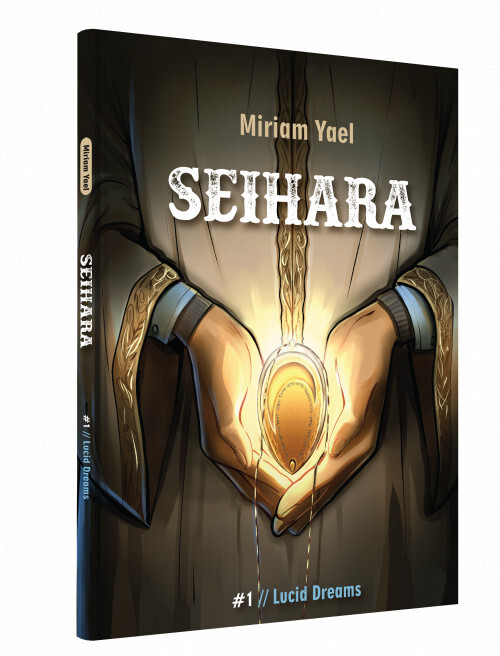- Dovtrail Newsletter
- Posts
- I thought I knew frum comics
I thought I knew frum comics
...this one proved me wrong!
I work with this assumption that the “craft” of frum comics is still very primitive. Based on that assumption, I’ve made it one of my major professional goals to raise the bar in the industry. I was pleasantly surprised and a little bit intimidated when I found out I'm not the only one!
Acknowledging that a guy who works in the frum-comic ecosystem should actually know what’s out there, and not work based on assumptions, I’m trying to get up to speed and challenge those assumptions by reading some of the books that stick out to me. The first one I picked up makes a great start to this endeavor, and it caught my eye because:
The artwork immediately broadcasts competency.
The premise of the book treads far off the beaten track.
The target audience is not 7-14 year old boys.
It was on sale at Manny’s. 😅
Here’s how “1:0” by Miriam Yael taught me a thing or two:
Instant Replay
1:0 is technically a “graphic novel” which follows a young woman named Yonah into the heart of a stormy identity crisis.
She lands very promptly in the hospital, and makes an earnest attempt to convince everyone there that she is who she claims to be, but is hauled in the opposite direction by a complex chain of events, and she’s eventually forced to confront an alter-ego that threatens to take over her life.
There are evil-genius-hackers, car chases, and some slap-stick sprinkled in for good measure, but the bulk of the story is driven by that emotional struggle.
Assumption: Worn-out premises
villain ➡️ ⬇️scenario | Nazi | NKVD | Terrorist | Inquisitor | Poritz |
|---|---|---|---|---|---|
Kidnapping | |||||
Survival | |||||
Escape | |||||
Revenge | |||||
Treasure hunt |
This may have been the first psycho-drama graphic-novel on Jewish bookstore shelves. I hope its success encourages more experimenting!
Author/illustrator Miriam Yael goes straight for the jugular, placing “dissociative fugue” (Maybe more accurately “dissociative identity disorder”) at the crux of her story. That’s bold.
Developing that internal, emotional conflict calls for many internal, emotional scenes, which require much more finesse to pull off, than, say, laser-space-battles, or super-robo-spy-stunts.
Those emotional scenes only work because of competent use of visuals… Which leads us to our next section:
Assumption: Artists - talented, not trained
Again with the self confidence - The art, layouts, and visual conventions are inspired by manga (Japanese comics), another surprise guest on the frum bookshelf. This means certain gimmicks - like a speech bubble pointing to a character in another frame - will take a minute to process for the uninitiated, but end up being quite refreshing. There are side-mouths (mouths drawn onto the cheek of a character who's seen in profile) which isn't my favorite manga/anime convention, but there are some more accurately drawn mouths in the second volume, and anyone familiar with this style probably wouldn’t be bothered.
Composition, shot angles, and colour palettes are all given thought. The mark of a well rounded artist.
Panel shape, size, and flow show a lot of creativity and accentuate the action.
Colour composition is tailored to each scene, lighting is chosen very intentionally.

Amazing use of colour to set the mood
Drawn-out visual sequences with no text clearly show that the author was working with the medium in mind, and had faith in the power of her art to communicate the message of the scene.

Who needs dialogue? (read right to left)
This is likely a reflection of the original two pages every two weeks release schedule, but the plot bunny-hops forward in short, somewhat independent vignettes. That means villains and support characters, as well as subplots pop in and out, which is a little hard to follow. The story does focus in as it moves along, though.
Despite that, the main conflict runs a connecting thread through all the smaller episodes, driving to the punch line, and tenaciously drawing the reader along with it ‘till the end.
Well thought-out plot-twists act as thermal columns to keep the narrative afloat. <spoiler> Early on, Yonah's best friend reveals that she's never met Yonah's parents, shaking our trust in the main character. </spoiler>
The story is often narrated by the protagonist. Having a specific narrator isn’t very common in frum comics, especially not an unreliable one.
Eccentric vocabulary like “inverness cape” and “missing children’s doppelgänger department” (Or their Hebrew equivalents) spice up the dialogue and keep the reading fun.
Characters react believably to situations. For example: Yonah has to pretend to know two other girls at one point, and her awkward attempt comes off as quite authentic.
The exposition in this book is exemplary. Exposition is how an author chooses to reveal information to the reader, and it can make or break a story. Miriam Yael nails it. She's in no rush to divulge all the details of the story, which allows her to choose moments and methods of exposition that are well solved into the narrative, such as:
• A friend's innocent remark.
• A glance at an old picture. (Bonus points for visual story telling.)
• A quick hypnosis session. (Trust me, it works in context.)
A keen awareness of situations also presents many opportunities for subtle exposition. ie. When Yonah is in the hospital, a shot of her hospital bracelet lets us know that she's been confused with someone else.
Final score
1:0 in Miriam Yael's favour! I’m very optimistic after seeing this kind of innovation in our comic industry. Introducing a new genre, providing an amazing example of how well-designed visuals can take some of the story-telling burden off of the speech-bubbles, and proving that a properly planned and thought-out story can more or less tell itself.
The book ends with a sublime observation that echoes all the way back to the title on the front cover. This work approaches comics as a genuine and unique craft, succeeds in tapping the potential of visual story telling, and delivers a very compelling experience!
Here are the books, if you have Hebrew readers at home:
And you can follow Miriam Yael on Instagram to see more of her work:





Reply